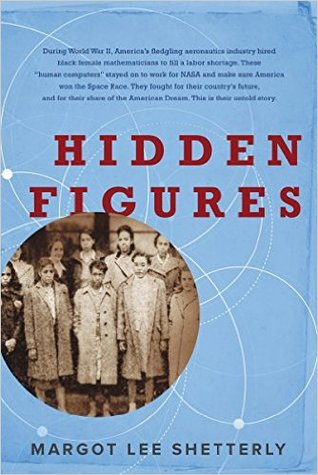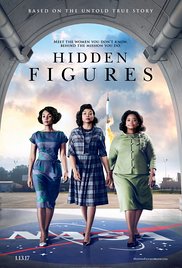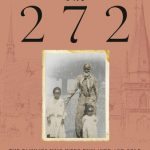 Hidden Figures: The American Dream and the Untold Story of the Black Women Mathematicians Who Helped Win the Space Race by Margot Lee Shetterly
Hidden Figures: The American Dream and the Untold Story of the Black Women Mathematicians Who Helped Win the Space Race by Margot Lee Shetterly Formats available: hardcover, paperback, ebook, audiobook, movie!
Pages: 368
Published by William Morrow on September 6th 2016
Purchasing Info: Author's Website, Publisher's Website, Amazon, Barnes & Noble, Kobo, Bookshop.org
Goodreads
Set against the backdrop of the Jim Crow South and the civil rights movement, the never-before-told true story of NASA’s African-American female mathematicians who played a crucial role in America’s space program—and whose contributions have been unheralded, until now.
Before John Glenn orbited the Earth or Neil Armstrong walked on the moon, a group of professionals worked as “Human Computers,” calculating the flight paths that would enable these historic achievements. Among these were a coterie of bright, talented African-American women. Segregated from their white counterparts by Jim Crow laws, these “colored computers,” as they were known, used slide rules, adding machines, and pencil and paper to support America’s fledgling aeronautics industry, and helped write the equations that would launch rockets, and astronauts, into space.
Drawing on the oral histories of scores of these “computers,” personal recollections, interviews with NASA executives and engineers, archival documents, correspondence, and reporting from the era, Hidden Figures recalls America’s greatest adventure and NASA’s groundbreaking successes through the experiences of five spunky, courageous, intelligent, determined, and patriotic women: Dorothy Vaughan, Mary Jackson, Katherine Johnson, Christine Darden, and Gloria Champine.
Moving from World War II through NASA’s golden age, touching on the civil rights era, the Space Race, the Cold War, and the women’s rights movement, Hidden Figures interweaves a rich history of scientific achievement and technological innovation with the intimate stories of five women whose work forever changed the world—and whose lives show how out of one of America’s most painful histories came one of its proudest moments.
My Review:
Hidden Figures tells an absolutely fascinating story; a story that is all the better for being true.
Once upon a time, a computer was not a piece of machinery. Once upon a time, a computer was a human being, usually a woman, who was just about a genius in mathematics. In spite of the fact that most people believed, rather foolishly, that women weren’t capable of either higher mathematics or professional achievement, this is the story of a group of women who did both, plotting trajectories and engineering airplane designs that led from the battlefields of World War II to the moon.
Although a piece of this story was also told this year in Rise of the Rocket Girls, the struggle for achievement and recognition is even more striking in Hidden Figures. All of the hidden figures in this book were hidden twice, once by their gender, and again by their race.
Hidden Figures is the story of the black women who began their careers, or in some cases re-started their careers, within the segregated confines of West Computing at what is now NASA’s Langley Research Center in Jim Crow era Hampton Virginia during WWII.
It was a job with endless demands, huge requirements and never enough people to fill the positions. During World War II, Langley was THE place for aviation and aeronautic engineering. The space race wasn’t yet a gleam in anyone’s eye, even as crazy as the NACA nuts could sometimes be. The National Advisory Committee for Aeronautics (NACA) was behind America’s superiority in the air in WW2. But to achieve that superiority required hordes of engineers and battalions of human computers to create and confirm mathematical formulas for everything from missile trajectories to drag co-efficients.
Many of those human computers were black women with degrees in mathematics and a desire to either further their careers, make an amazingly good wage for a black woman in the 1940s to support their families, or both.
They faced segregation at the workplace and in the town of Hampton. They created a place for their families and their friends, and a culture of support that made it just a little bit easier for the next black female computer or the next black male engineer to become part of what they all saw as their new home and the place where important work happened.
Hidden Figures is the story of the women who powered the Space Race. Whether by hand and mind, or by electronic computer, they imagined and created, double-checked and rechecked, the trajectories for John Glenn’s famous first flight, Neil Armstrong’s even more famous first moonwalk, and even supplied the Plan B mathematics that helped bring Apollo 13 back from the brink of disaster.
Their story of mostly unsung heroism is quietly brave and bravely daring. In an era where women’s contributions to computing, especially the contributions of women of color are harassed at every turn, this is a story that shows just how much is possible if we are willing to work and fight for it.
 Escape Rating A-: There are two aspects to my comments. On the one hand, there is the story itself, which is absolutely awesome and needs to be distributed to the widest audience possible. (There’s a movie coming this winter!) This is one of those stories that, if it were not true, no one would believe it. A story of female professionals succeeding despite the odds in a male dominated profession and workplace. The story of black women thriving professionally and personally in the Jim Crow South.
Escape Rating A-: There are two aspects to my comments. On the one hand, there is the story itself, which is absolutely awesome and needs to be distributed to the widest audience possible. (There’s a movie coming this winter!) This is one of those stories that, if it were not true, no one would believe it. A story of female professionals succeeding despite the odds in a male dominated profession and workplace. The story of black women thriving professionally and personally in the Jim Crow South.
In the way that Hidden Figures captures the numerous double standards that these women worked and lived under, and the way that they saw themselves both as just doing their jobs and as powerful symbols for their race and sex, there are some parallels to the histories told in both Rise of the Rocket Girls and The Defender. These women worked for their families, for their race, and for themselves and their own personal hopes and dreams.
The history of Langley, the Space Race and the opening of doors in Civil Service employment owes much to the struggles that are documented in The Defender. The doors opened because the Space Race, the ending of colonialism in much of the world, and the Civil Rights movement cast a glaring light on racism in America, and on the ways that segregation denied so many the education needed for the U.S. to compete on the world stage, while making a mockery of America’s calls for freedom and democracy elsewhere in the world.
Some things never change.
Because we see this story through the eyes of specific individuals, it is easy for the reader to empathize with both their struggles and their triumphs, whether the reader meets the characters on several axes, or none.
But as work of authorship, this story has a slow start and initially a few too many foci. There’s also quite a bit of information about aircraft engineering that may border on overload. Once the story moves from the NACA era to the NASA era, the narrative picks up steam and the points of view become more focused.
Minor quibbles aside, this is a book for anyone who is interested in the history of women in engineering and computer, the history of the ways that both race and gender impact opportunities in those fields, and the history of NASA and space flight.
Fittingly one of the stories at the end is the famous story of Martin Luther King Jr. convincing Nichelle Nichols to remain on Star Trek as Lieutenant Uhura, not because of what she actually did onscreen, but because of what she represented. She represented the future of all the women portrayed in Hidden Figures, and their dream to reach the stars.

















The story about King and Nichols has always inspired me. I’m sure that learning about these women will inspire me in new ways!
Thanks for being a part of the tour.